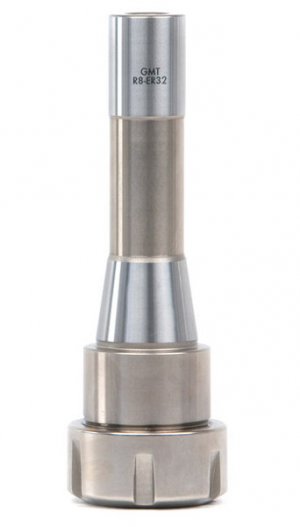- Joined
- Dec 20, 2012
- Messages
- 9,422
Thanks fellas for replying. My mill uses R8 collets currently. I would not use a drill chick to hold the cutter. So what you guys are saying is the standard R8 collet isn’t really sufficient enough for my mill and I should step up to the ER cutter? Or is the ER collets just needed for long reach applications?
The key reason I suggested an ER system for your application is because ER chuck/collets dampen vibration better than most other available systems. When using longish cutters, this matters. They also dampen shorter end mills and other tooling so its a good system. The collets are available in increments of 1/32" so just about any tool you are likely to use can be held accurately. These collets can compress down about 0.040" and still hold solidly, albeit with a bit less accuracy so small variations in tool shank size won't bother an ER collet.
Consider also that a high quality collet, like a standard model Rego-Fix, has a run out of 10 microns or less. Their precision collets have 3 microns of run out. I don't know what an R8 collet runs out at but I'm pretty sure it isn't in a comparable range.
There are many reasons why ER collets/chucks are the commonest tool holding system in the world - fast and easy to use for a wide range of tooling, accurate, damps vibration well, and is probably the most accurate chucking system design out there. You can get collets in both Imperial and Metric sizes so just about any cutting tool you are likely to use can be held securely and accurately.
Is the ER system perfect? No, it's not. If you're doing a lot of heavy cuts that generate a lot of vibration then it isn't the best choice; heat shrink holders would be better. However, for almost any work that a hobby guy is likely to do it is a very good option.
You can use an R8 collet. It won't hold an end mill as securely as an ER collet, will not be as accurate, will not damp as well so accuracy and tool life will be reduced. For a hobby guy making a cut in aluminum, an R8 collet may be just fine so I am not saying you should not or cannot use it; I am saying that if I were using an end mill with a 2"+ flute length and needed it to cut accurately, I would use an ER collet to hold it.


